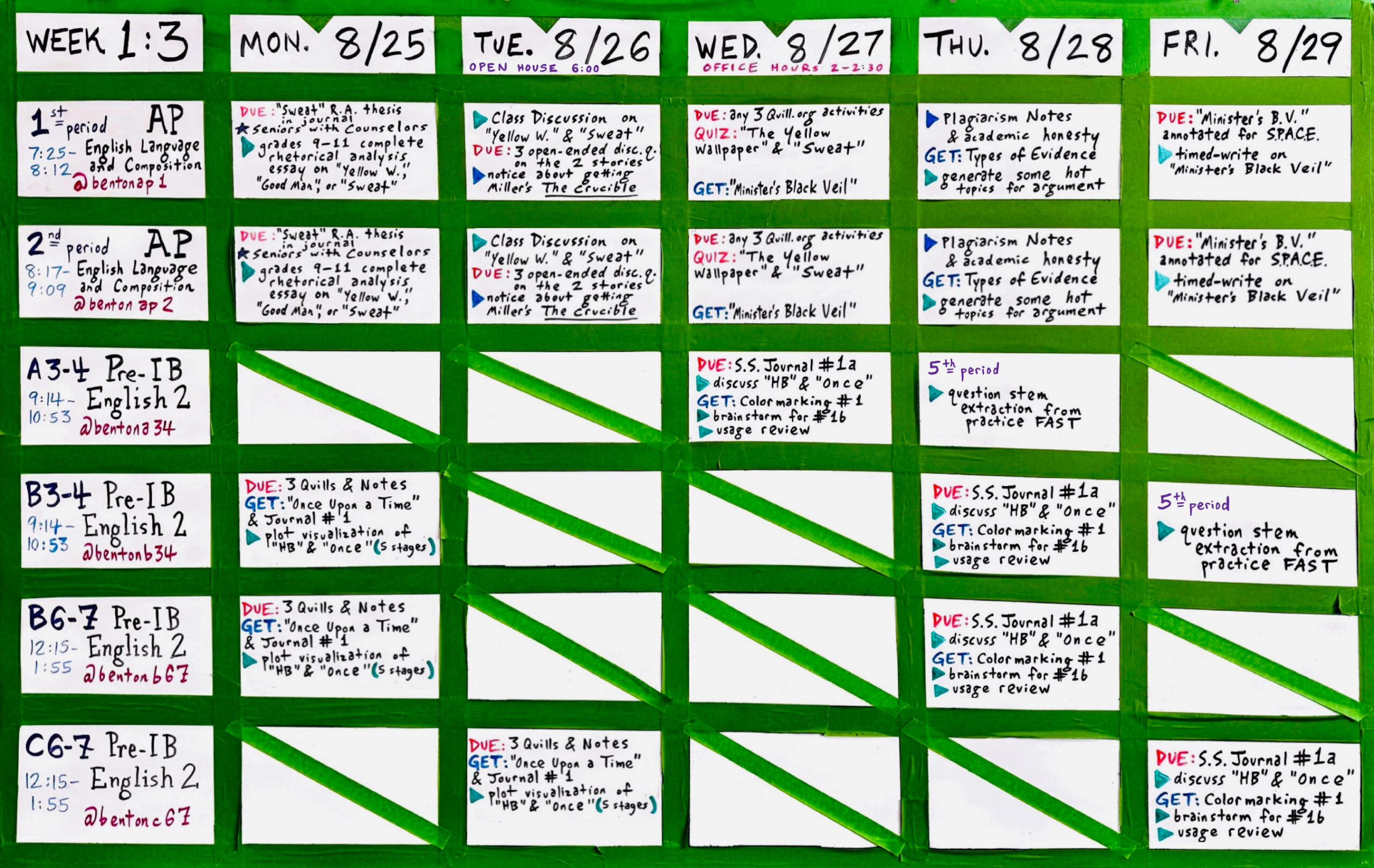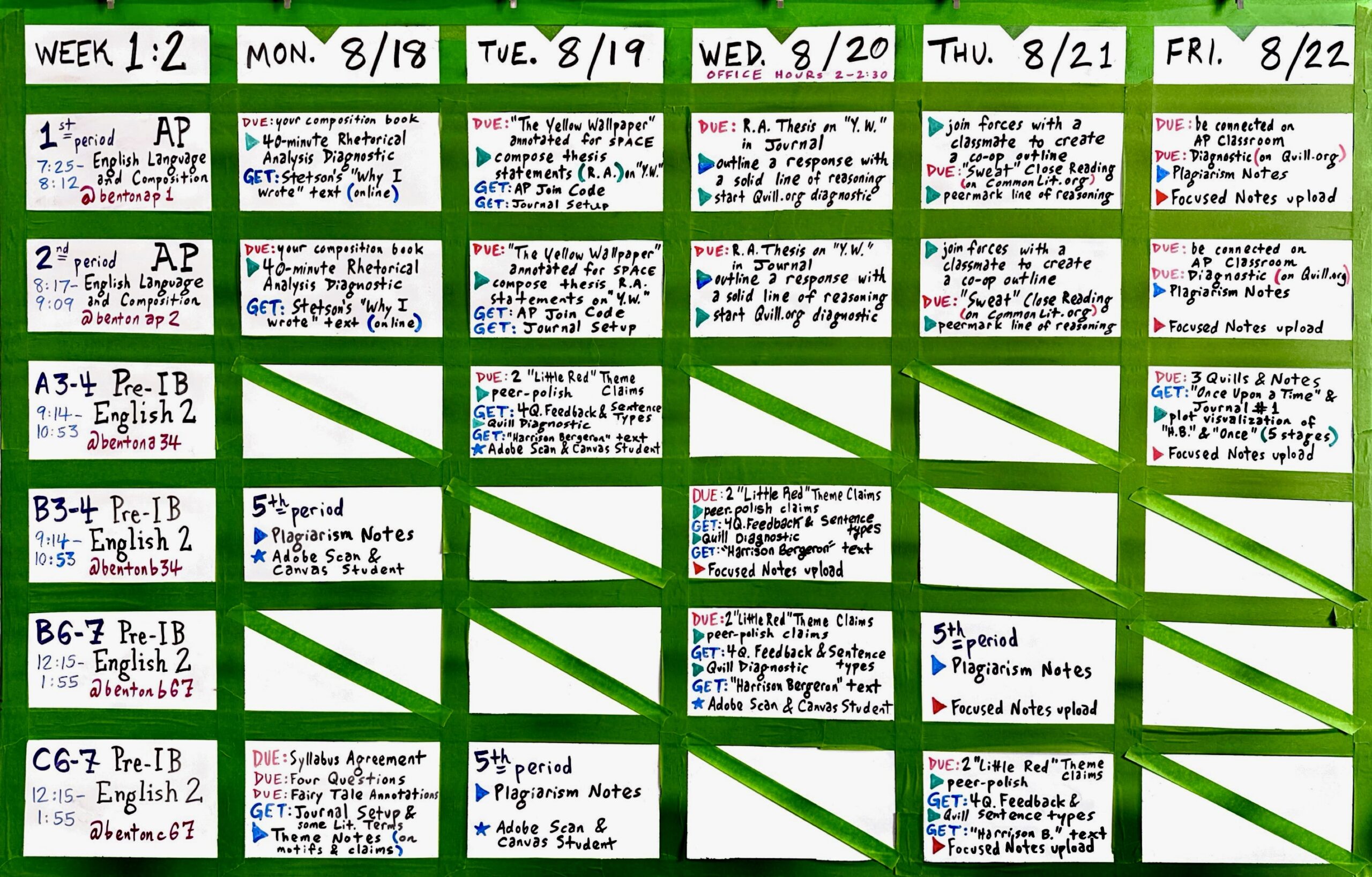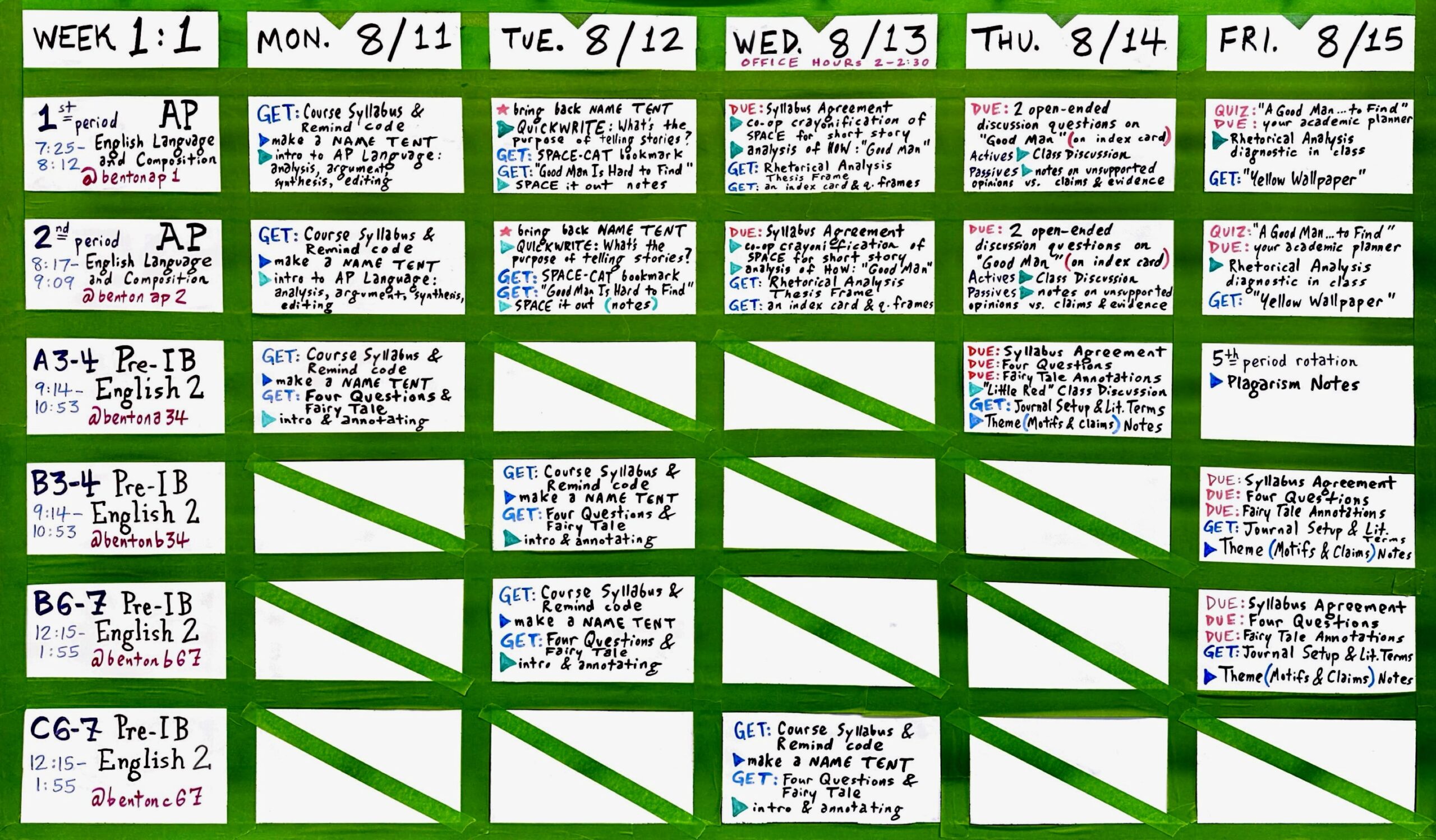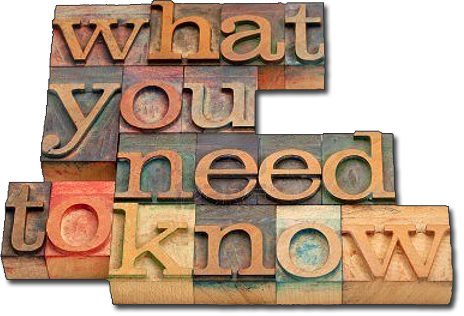AP Language: Thesis Frames, SPACE-CAT Bookmark, Verbs for Analysis, Wheel of Feels (Tone), Journal Setup & Rhetorical Terms, Discussion Question Stems, Blank Outline, Types of Evidence, Plagiarism Notes / Short Stories: “A Good Man Is Hard to Find”, “The Yellow Wallpaper”, “Sweat”, “The Minister’s Black Veil”
IB Freshmen: Four Questions, Colormarking Guide, Colormarking #1, Stated & Implied Theme, Literary Analysis Thesis Frame & Verbs, Weaving & Citing, Transitions & Commentary, Wheel of Feels (Tone), Plagiarism Notes, Practice FAST Test / Short Stories: “Little Red Cap”, “Harrison Bergeron” E-text, Vonnegut Background, “Once Upon a Time” E-text, Gordimer Background, Short Stories Journal #1
IB Diploma Support: Rotation Calendar & 5th Period Rotations, DS Contract, IB Academic Guidelines, Say Something Anonymous Reporting System / Research: Gale Databases, Google Scholar, JSTOR, Sci-Hub / EEs: Full EE Guide, MLA Template, MLA Sample Paper, EE Rubric, English EE Scoring, Prescribed Reading List, Sample EEs & Scores












